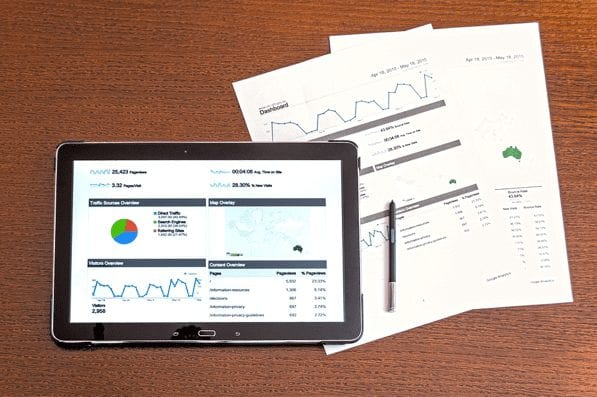Is your website getting results for your B2B company?
There’s really only one surefire way to tell: By diving into your website analytics.
In today’s RIG94 lab, we’re getting down to the basics of web analytics. We’ll teach you how you can not only track the numbers and data stats but understand how they’re impacting your business revenue too.
By using tools like Google Analytics, or simply the backend of your website dashboard, you can find out a lot about how your visitors are using your website. Through this, you can see how effective it is at delivering results to your bottom dollar.
The reason website analytics are such powerful tools is because they let us analyze each step of our web users’ journey. From here you can see where to make improvements along the way. The goal here is to optimize their overall experience.
Metrics related to web traffic can tell you how many people are coming to your site, where they’re coming from, and what pages they’re most often interested in.
Use the information and results to your full advantage, and you’re well on your way to the path of improvement and success for your company.

Here are the 5 vital website metrics you need to be tracking.
1. Bounce Rate
This metric tells you the number of people who visit your website and leave without visiting a second page, (i.e. they’re in and out of there). Since there are a number of reasons why a “bounce” can happen, this stat is not an end-all-be-all for website performance. Do keep an eye on this metric though because it can tell you if your site has a 404 error or a page isn’t loading as quickly as it should, leaving your visitor’s searching for the nearest exit.
According to a RocketFuel study, the ideal bounce rate should fall somewhere between 26-40%, and anything higher than 55% is probably indicative of an issue somewhere along the way.
2. User Data
Web analytics are most useful when it comes to tracking your visitors and their particular web searching habits. By analyzing these numbers you’re able to find things out such as their current demographic and location, (i.e. where they live and are searching for your site from). You can also track things such as new or returning users. By looking into this you’re able to see who’s coming back for the second time around because your content stuck with them for one reason or another. This is a vital part of analyzing your website’s ability to engage users and entice them to convert into a paying customer. Understanding your audience can help you with everything from creating your next marketing campaign to product or service development. Simply put, when it comes to user data, the more you know, the better you can serve their needs.
3. Devices and Browsers
Knowing how people get to your site can not only help shape your marketing strategy, it can tell you which of your marketing efforts are working and which ones might need to be re-adjusted. Find out if your users are landing on your website via mobile, desktop or tablet. Then, you can determine if you need to prioritize a certain format over another.
Pro Tip: Mobile is king these days when it comes to convenience, so it’s crucial to make sure that your website is at the least, mobile-friendly.
4. Traffic Sources
One of the ways people might get to your website is by clicking through a link on another website. This is most commonly known as a “referral”. Knowing your website’s top referral sources is a great opportunity to understand your customers better. Find out if they’re coming from Facebook, LinkedIn, Google or somewhere in between by tracking your traffic sources. That way, you’ll know where it pays off most to spend your marketing dollars.
5. Sessions
Any time an internet user interacts with your site for a period of time, that’s considered a session. A session can include multiple page views and interactions, and typically ends after 30 minutes or so, or when the visitor re-enters the site from a different search. Tracking your visitor’s session is key to understanding how long your content is keeping your viewer engaged.
Ultimately, the main purpose of using Google Analytics and website data is to improve your conversion rate. Nearly every company has some sort of conversion goals, whether it’s selling a product or inviting users to sign up for the latest B2B news.
It’s vital to not just understand what these numbers are telling but using them to take action. With this, you’ll be able to serve your audience best with the content and services they deserve.
Interested in learning more about your website traffic and analytics data? We can help! Contact our team of marketing experts at RIG94 Agency today!